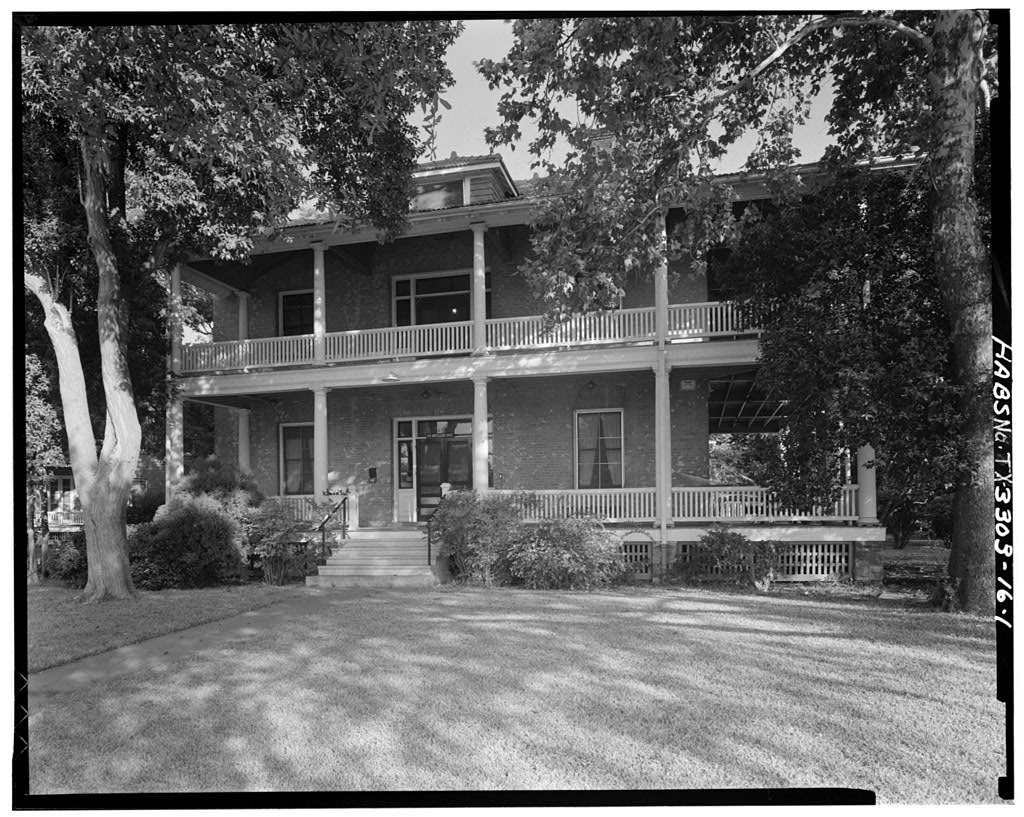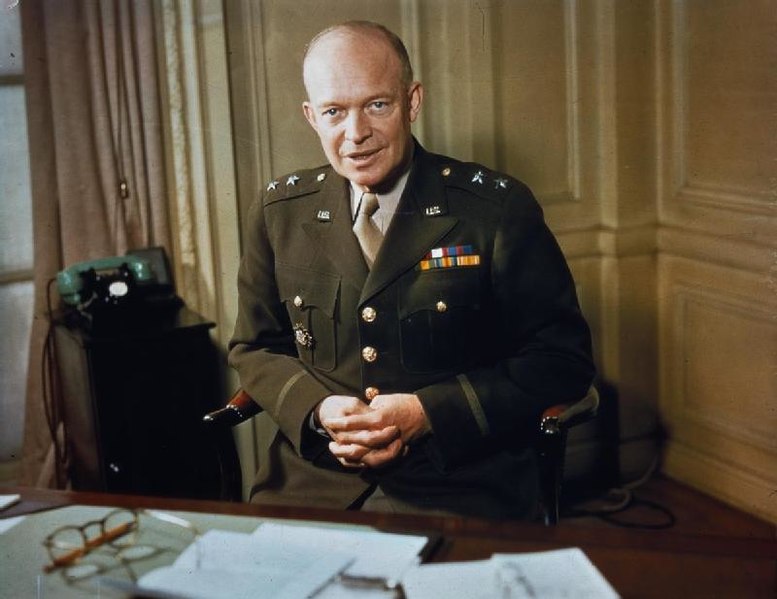There are certain days that we remember for the rest of our lives. Days during which we mark the passage of time by remembering where we were and what we were doing at certain moments. For Dwight Eisenhower, for the United States, and for the world, December 7, 1941 was one of those days, a day when everything changed.
In 1941, December 7 fell on a Sunday. As the Christmas season arrived, many in the United States were worried over the growing tensions between the United States and Japan, as well as the news on the progression of war in Europe. On the evening of Saturday, December 6, President Franklin Roosevelt wrote directly to Japanese Emperor Hirohito, attempting to deescalate tensions and find a way for the two world powers to remain on peaceful terms despite growing friction in the Pacific. One of those who had an eye on the situation overseas was fifty-one-year-old Dwight Eisenhower, who was hoping to spend the day, or at least part of it, at rest. At the time, Eisenhower was posted at Fort Sam Houston, just outside of San Antonio, Texas. It was a familiar setting for Ike. In 1915, fresh off his graduation from West Point, a then twenty-five-year-old Eisenhower received his first army assignment at Fort Sam Houston. And it was there that autumn, on a Sunday afternoon in October, where he met Mamie Doud, who was traveling with her family and visiting some friends stationed there. Ike and Mamie had an instant attraction—within a year, they were married. Twenty-six years later—with stops all around the United States and the world in between—he and Mamie were back in Texas.

Officers' Quarters, Fort Sam Houston, Texas (Library of Congress)
In December 1941, Eisenhower was a Brevet Brigadier General serving as the Chief of Staff for the Third Army. In this role Ike had been instrumental in planning and executing military maneuvers in Louisiana that fall—the largest pre-war exercises done by the United States. The maneuvers not only helped prepare the United States army for war, but also provided Eisenhower another opportunity to distinguish himself. Weary from his work that morning, Eisenhower decided to call it a day around noon. He headed home with a nap in his sights. After eating lunch, he laid down with strict orders that he not be woken for anything. Ike recalled years later, “The biggest thing on my immediate horizon was a planned Christmas leave with Mamie, to visit our son, John, a cadet at West Point.”
By 1:00 pm (Texas/Central Standard Time), however, events transpiring half a world away were already shaping the future of Eisenhower’s life while he slept. Japanese planes had appeared in the skies above Pearl Harbor, dropping the bombs and torpedoes that would, in the words of Japanese Admiral Yamamoto, awaken the sleeping giant of the United States. Despite his instructions to the contrary, one of Ike’s aides decided he had no choice but to wake the sleeping officer as well, providing him with the news that the country had been attacked by the Japanese. With thousands of Americans killed, and thousands more still wounded, war had arrived. Twenty years later, on December 7, 1961, in a speech to the Century Association in New York City, Ike related that his first thoughts upon hearing this news of the attack on Pearl Harbor were not of war, but of his plans to travel to West Point to see John that Christmas and how he would now have to explain the sure-to-be-cancelled trip to his wife. “Like most others,” Ike remembered, “at that moment I reacted with an instinctive focus on short-term possibilities-and a fleeting hope that this report simply could not be true.” Certainly, Ike noted, he had no “four-year panoramic view of a vast national program that would carry our fighting forces across two oceans from disaster to victory.”
Fort Sam Houston in Texas was the place of two great beginnings in Eisenhower’s life: on a Sunday afternoon in October 1915, he met Mamie Doud, and on a Sunday afternoon in December 1941, he learned of the attack on Pearl Harbor. These two events—his marriage to Mamie and his experiences during the Second World War—perhaps more than any others, were the defining threads of Eisenhower’s life. Without either of them, his road to the White House would have looked much different—perhaps it would not have happened at all.
His peaceful plans now dashed, Ike returned to work. Within days of the attack, Eisenhower received a call from Washington and was told to report to the War Department as soon as possible. He quickly packed and left, not knowing what was in store for him at the nation’s capital. In the 1930s Eisenhower had served on Douglas MacArthur’s staff in the Philippines, where he was able to observe the evolving situation in the Pacific up close. His time in the Philippines, combined with his track record as an excellent officer, led the War Department to summon him. A series of planes and trains got him to Washington D.C. by December 14, where he soon made his way to the War Department and the desk of General George C. Marshall, the Chief of Staff of the U.S. Army. Marshall laid plain the situation for Eisenhower, then asked him what the country should do. Ike was being asked to play a critical role in forming the country’s first actions of the Second World War, the same “four-year panoramic view” he described in his speech twenty years later. Thus far in his career, he had always been on the outside of major opportunities. Now, finally, he was exactly where he wanted to be. Before he had left to begin his studies at West Point, Ike’s parents reminded him, “Opportunity is all about you. Reach out and take it.” That Sunday morning in the War Department—one week after Pearl Harbor—Eisenhower told Marshall, “Give me a few hours.”

General Dwight Eisenhower in 1942 (Imperial War Museum)
Eisenhower found a desk and quickly began laying out steps for stopping the Japanese advance in the Pacific, one that involved the United States attempting to hold some ground in the South Pacific from which to make a push back against the Japanese. When he had finished his thoughts, he brought his report to Marshall. Among the lines he had written, Eisenhower noted, “We must take great risks and spend any amount of money required…. We dare not fail.” Marshall noted his agreement. Eisenhower was placed in charge of the section of the War Plans Division overseeing the Philippines and Far East, exactly where the need was most urgent.
After Eisenhower’s long and winding career, history had provided him his moment in time, at last. When Ike arrived in Washington, his task was to find a way to help build and lead the United States in this daunting new endeavor. The task at hand was immensely challenging, requiring the nation to adopt a unity of purpose and action that stretched from the home front across two major oceans. Looking back on Pearl Harbor twenty years later, Eisenhower recalled not only what it meant for his own life, but the larger lessons the country could draw from the experience when he declared,
“History is not so ancient as to describe for us the beginnings of men’s efforts to work together to perform a piece of work appearing worthwhile to the entire group. But if we come at once to the circumstances of our own time, we have no difficulty in recognizing the strength that is the product of unity among ourselves. Whatever the resources and strength of a nation, it is inevitably made greater and stronger by unity—cooperation among themselves—of its people.”
Bibliography
Books
Ambrose, Stephen. Eisenhower: Volume One, Soldier, General of the Army, President-Elect, 1890-1952. New York: Simon and Schuster, 1983.
Eisenhower, Dwight D. At Ease: Stories I Tell to Friends. New York: Eastern National, 2000.
Eisenhower, Susan. How Ike Led: The Principles Behind Eisenhower’s Biggest Decisions. New York: Thomas Dunne Books, 2020.
Shirley, Craig. December 1941: 31 Days that Changed America and Saved the World. Nashville: Thomas Nelson, 2011.
Articles
Natanson, Hannah. “‘Give me a few hours’: How Eisenhower, armed with only a typewriter, planned the U.S. response to Pearl Harbor”. The Washington Post, December 7, 2019.
Eisenhower Presidential Library
Eisenhower, Dwight D. Post-Presidential Papers, Speeches Series Box 2: December 7, 1961 Century Association
Eisenhower, Dwight D. Records as President, Confidential File Box 101: WORLD WAR II (2)(3) [Volume One of the history of the Joint Chiefs of Staff during the war with Japan, Pearl Harbor through Trident]
|
December 07, 2020
|
Last updated: December 14, 2021
